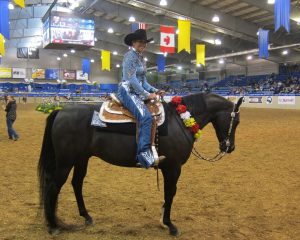Chaps, the seatless pants coverings most frequently associated with cowboys, originated from the Spanish. These sturdy leather coverings were called armas – which meant “shield” – and used as protection against cactus, brush and thorns when herding cattle.
Basically they were two large pieces of cowhide that attaches to the horn of a rider’s saddle and were spread across both the horse’s chest, as well as the rider’s legs. They served their function well, but were bulky and hard to work with. As such, this early and rather cumbersome design was modified, becoming more portable by placing the cowhide garment entirely on the rider.
Viola! From this Chaperajos were born!
The Spanish brought chaperajos – a word meaning leather breeches or “leg of iron” – to the Americans when colonists from that country started establishing large ranches in Mexico, Central America, and the southwestern areas of North America that eventually became California, New Mexico and Arizona.
Abbreviated to “chaps,” and pronounced with a “sh,” rather than “ch” sound (“shaps”), the Spanish-style leather leggings were tailored to fit local climates, terrains and hazards as the cowboy population expanded throughout the west.
The first version was “shotgun chaps.” This is the plainest style of chaps and the simplest design. The seamless leather pants came to bear this name due to their shape that reminded people of a double-barreled shotgun. Popular from the 1870’s thru the 1890’s, they were generally held together by a belt that fit straight across the waist, but because of their closed legs and skin-tight design, they were difficult to put on or take off while wearing a pair of boots and spurs. (Later on, however, shotgun chaps began incorporating full-length zippers along the leg.)
Angora (or Wooly) chaps also became popular in the late 1800’s, but these were designed to protect northern cowboys in colder and wetter regions such as Montana and North Dakota. Made from hides with the hair left on from a variety of animals – including bear, buffalo and Angora goat – these chaps were warmer, and the natural oils in the fur repelled the rain and snow.
A third adaptation appeared in the early 1900’s, called batwing chaps. These chaps fit the body like shotgun chaps from the waist to the knees, but were modified to flare out in a winged shape at the bottom to provide greater freedom of movement and ventilation in warmer climates. Today, they are very popular among rodeo cowboys for the fact that they accentuate the ride of the cowboy on bucking horses and bulls.

Although chaps are no example of a cowboy’s good fashion sense, in the show arena they can be for you! As time has passed designs have been re-modified for purely stylistic and decorative purposes. No longer just boring brown, Show Season can make chaps in any number of flashy colors to complement your and your horse’s coloring, as well as embellish your chaps with fringe, studs and crystals – combining the time-honored function chaps were created to serve, with wildly decorative fun.
